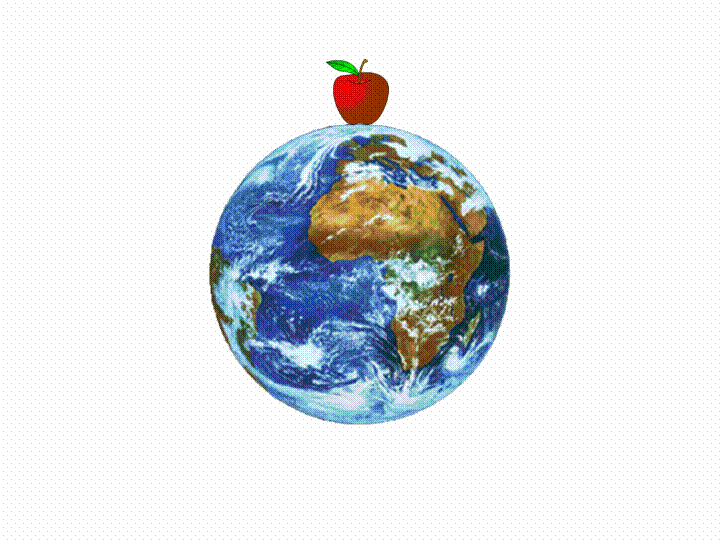|
The jumping apple
According
to tradition, Newton's hypothesis of universal gravitation was
prompted by the fall of an apple. Whether this is a fiction or
not, it represents a way in which Gravitation nicely fit into
people imagination. Following this pictorial approach, Einstein
realized that an apple placed in the vicinity of a pair of orbiting
stars would oscillate, like a sort of jumping apple. Indeed, one
of the consequences of the Einstein’s theory of Gravitation is
that a pair of orbiting stars generates ripples in space, the
so called gravitational waves.
|
|
| A
gravitational wave impinging perpendicular onto a
ring of particles, forces them to oscillate in a "cruciform"
manner, as shown in the above animation. |
If
we consider two particles, we can see that their relative
distance changes periodically, and that in the reference
frame of one particle, the other particle is seen to
be jumping up and down. |
| Strictly
speaking, in the case of extended bodies, the situation
is more complicated. If an apple is located on ground,
we definitely would not see it jumping. The system Earth-apple
responds to gravitational waves as in the animation
on the right. |
 |
|
| |
| However,
if the apple is orbiting around the Earth, or it is
attached to its own tree, in this case we would definitely
see it jumping up and down when gravitational waves
are impinging on it. At this point, during a public
conference, a smart child said: "Whow ! that's
why the Newton's apple fallen! It was shacked by a gravitational
wave, and so it was detached by the tree, and fallen
down!" |
|
|